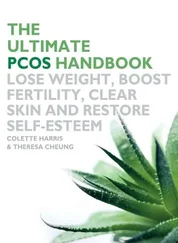Although dreams can occur during NREM, researchers have discovered that it is REM sleep which is most associated with dreaming. When sleepers are awakened during REM sleep, they typically recall their dreams. Sometimes people feel temporarily paralyzed if woken during REM, as if something heavy and/or malevolent is pressing down on them. This phenomenon may explain supposed succubus, incubus, and alien abduction experiences.
The first stage of REM sleep lasts around 10 minutes and then you fall back into stages two, three and NREM sleep again, and keep moving backwards and forwards between the stages through the sleep cycle. As the cycle continues, however, the REM phase gets longer and longer, with the longest phase lasting up to 45 minutes. Of all the phases of REM and NREM sleep, the final REM phases are the ones from which you are most likely to recall your dreams.
The emotional center of the brain is more active than the logical center when we are dreaming. But, intriguingly, scientists have found that dreaming about faces is linked to the areas of the brain involved in facial recognition when we are awake, suggesting that the dreaming and waking brain may not be as different as is often thought.
We Sleep to Dream
And one day there will come a great awakening when we shall realize that life itself was a great dream.
– Chuang-Tzu
Experiments have proved that sleep is essential for life. Rats typically live for two to three years; rats deprived of all stages of sleep live for about three weeks, and rats deprived of only REM sleep survive for about five. Other research has shown that both NREM and REM sleep are essential for preserving memory, but if people are repeatedly woken during periods of REM sleep – which means they are deprived of their dreamtime – they become anxious, irritable and stressed. This suggests that all stages of sleep are vital for physical and mental health, and REM sleep – when you are most likely to dream – is essential for your emotional and psychological well-being.
Therefore, although we still don’t know why we sleep, it is entirely possible that one of the major reasons we sleep is to dream.
How Much Sleep Do We Need?
We spend up to a third of our lives sleeping, which means that if you reach the age of 100 you will have been asleep for around 33 years. The amount of sleep each person needs to feel healthy and think clearly depends on many factors, including age and activity levels. For example, babies need around 14–15 hours a day, while teenagers need around 9–10 hours. For most moderately active adults around 7–8 hours of sleep a night appears to be the average amount needed, although some people need as few as 5 hours and others need up to 10. Elderly people tend to need a little less sleep, around 6–7 hours a night, and women tend to need more sleep than men. Women also tend to be lighter sleepers and more likely to wake during the night than men.
So, What Are Dreams?
Life is a dream, realize it.
– Sathya Sai Baba
Dreams captivate us. But what are they? Where do they come from? Why do we have them? Do they mean anything? Are they simply a collection of memories and random associations, or insightful gifts from our intuition? Can they help us make decisions in our waking lives?
We have learned a great deal about dreaming – and, as mentioned previously, all the indications are that dreams are crucial for your mental and emotional health – but there is still so much we don’t know: dreams remain as mysterious as ever. This elusiveness hasn’t stopped people theorizing about why we have them.
There is a school of thought which believes that dreams are meaningless, or just random neuron activity responding to biochemical changes. Others believe dreams are simply your brain’s way of decluttering or sorting out and consolidating memories and associations. However, most modern psychologists, scientists, and sleep researchers believe dreams are far more than that.
One prominent theory is that dreams reveal hidden insights, wishes, and truths about the dreamer. The world of the dream is a dramatization of the dreamer’s personal or inner world. Another popular theory suggests dreams can help you process or come to terms with difficult emotions to achieve psychological or emotional balance. Dreams may also help you rehearse, practice, and prepare different responses to situations or scenarios, in other words, they allow you to role play in a safe way.
There is also the popular ‘sleep on it’ view that dreams are a source of creative inspiration and can help with problem solving. One less prominent theory, but which has its supporters, is that dreams are a form of consciousness that can unite past, present and future and offer us glimpses of potential futures.
One thing that unites all these different theories is the belief that, whatever dreams are, they are good for you. They help you live a better, happier, life.
A Brief History of Dream Interpretation
Now Allah has created the dream not only as a means of guidance and instruction, I refer to the dream, but he has made it a window on the world of the unseen.
– The Prophet Mohammed
The notion that dreaming is positive, and dream interpretation a powerful tool, dates back millennia. Ancient art and literature are rich in dream references. Back in the mists of time dreams were not so much regarded as tools for personal growth (as they are today) but believed to have supernatural or prophetic significance. For example, the ancient Greeks, Romans, and Egyptians all believed dreams had miraculous healing powers, and the Bible promotes the idea that dreams are divine messages.
Other cultures, such as the Australian Aborigines and many African and Native American tribes, have always believed that dreams are a way to enter an unseen spirit realm. To this day, dream interpretation plays a major part in these tribal societies. The Inuit of Canada believe that when a person dreams, their soul leaves their body and enters the spirit realm.
As far as dream interpretation is concerned the Egyptians are thought to be the pioneers, producing the earliest known dream dictionary, written over 4,000 years ago. Called the Chester Beatty Papyrus today, it came from Thebes in Egypt and is kept in the British Museum. It is the ancient Greeks, however, who first proposed the theory that dreams are not from some external or divine source but are internal communications, or the divine spark within. Plato (427–347 BC) suggested that dreams were representations of hidden wishes and desires, while his pupil Aristotle (384–322 BC) suggested that dreams shared collective or similar themes. It was the ‘father of medicine’ Hippocrates (460–377 BC) who presented the idea that dream symbols had a physiological interpretation – for example, fire denoted indigestion – and should be used as diagnostic tools.
Artemidorus (AD 138–180), a Roman living in Greek Asia Minor, is believed to be the first dream researcher to focus fully on dream symbols and themes. He wrote a book entitled Oneirocritica ( The Interpretation of Dreams ) that is still in print today. He postulated that dream symbols had certain meanings but that the most important aspect of dream interpretation was the personal significance of the dream symbol to the dreamer. (This author is in total agreement with Artemidorus about the personal significance of dreams and their meaning, and can only dream that this dictionary stays in print as long as his remarkable manuscript!)
Throughout medieval Europe, even though the early Christians respected dreams for their spiritual significance, the repressive control of the Roman Catholic Church put a stop to any attempts at dream interpretation. By the end of the 15th century dreams were regarded as no longer significant, and a century or so later even Shakespeare called them ‘children of the idle brain’. The ‘dreams are meaningless’ school of thought persisted well into the 18th century.
Читать дальше
![Theresa Cheung The Dream Dictionary from A to Z [Revised edition] обложка книги](/books/618735/theresa-cheung-the-dream-dictionary-from-a-to-z-r-cover.webp)





![Theresa Cheung - The Dream Dictionary from A to Z [Revised edition] - The Ultimate A–Z to Interpret the Secrets of Your Dreams](/books/692092/theresa-cheung-the-dream-dictionary-from-a-to-z-r-thumb.webp)





